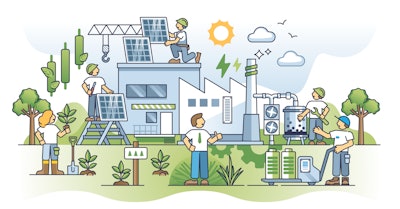
Companies today don’t have it easy when it comes to the challenge of decarbonization. Over several decades, GHG accounting and reporting has evolved from voluntary to a multi-dimensional requirement driven by geography, value chain and calculation methods. Today’s GHG Protocol Framework provides clarity, a foundation and reporting consistency across organizations – a system that has taken considerable time to build and institutionalize. Meeting Scope 1, 2 and 3 reporting requirements is complex for manufacturers, requiring extensive data collection, storage and analysis across the value chain. Current processes, often fragmented and people-driven, consume significant time and resources while falling short of advancing the mandate's goal: fostering environmentally conscious manufacturing.
Manufacturers today face an array of challenges that impact their businesses and oppose traditional decision-making. Geopolitics, supply chain disruption, an aging workforce, antiquated facilities and an increasingly complex regulatory environment affect producers every day. However, we are seeing substantial opportunities and investment in technological innovation to address these problems head-on. As manufacturing organizations prioritize their innovation portfolios and technology investments, they should be embedding initiatives to decarbonize at the same time to enable a cleaner and more environmentally conscious production process. Furthermore, as Artificial Intelligence (AI) and Machine Learning (ML) become mainstream, there are opportunities for manufacturers to turbocharge their decarbonization efforts.
Let’s assume for a minute that you are a large industrial equipment manufacturer, running three shifts a day to produce industrial-grade boilers. Your production process is GHG-positive for emissions and your organization has embraced a net-zero mandate by 2030. To maintain compliance, your ESG team regularly reports on Scope 1, 2 and 3 emissions but the effort to collect data in support of this reporting is considerable. Despite the GHG-positive production today, your near-term priorities are focused on operational excellence and driving an improvement in Overall Equipment Effectiveness (OEE) – it’s about keeping machines running so that you can chip away at a growing order backlog. Additionally, you are driving innovation on the shopfloor by introducing new machines and connected IoT devices that allow for greater insight into potential impacts to OEE and overall productivity.
These investments today will result in a treasure trove of production data (e.g., machine usage and monitoring, production rates and cycle times, visual inspection of completed processes, and machine energy usage) that is intended to be used to improve overall productivity and drive efficiency across your production processes. It’s where your technology teams are promising a positive impact on OEE and where the allure of AI and ML for shopfloor automation takes hold. But all this investment isn’t moving your organization any closer to your net-zero goals – you’re still producing around the clock with machines (albeit some new and more efficient) that are positive emitters. Ultimately, the system has been optimized for productivity and efficiency – not for carbon impact. Fortunately for your organization, the groundwork that has been established provides a strong foundation for emissions optimization.
Today’s manufacturers are increasingly betting on integrating data across a myriad of disparate shopfloor systems (e.g., PLCs, IoT devices, MES Systems). They are doing this to democratize data from the shopfloor and move towards systemic process optimization versus the typical targeted (or modular) process optimization that we generally see in this space. This is also where astute manufacturers are applying AI and ML to optimize across work cells and drive considerable improvement in quality, productivity, and process efficiency. Enter our decarbonization challenge. Your industrial equipment manufacturing company is already making considerable technology investments on the promise of driving measurable OEE impact. You’re already making the requisite investments to democratize your shopfloor data, and you already have an army of team members that are dedicated to driving emissions reporting and track improvement opportunities.
A natural extension of the foundational work that is already underway is to explore how this production data can be put to work to affect your net-zero aspirations. What if answering a few questions could lead to changes to your production schedule and process? Consider the impact that answering these questions could have:
- What is the effect of weather (e.g., full sun) on my factory emissions? Could I dynamically adjust my production schedule to optimize my emissions impact?
- What processes are generating the most scrap? What if I could tighten tolerances through process improvement to reduce production waste?
- What are the factors that are driving energy usage across the shopfloor? How can energy savings programs be deployed to reduce energy use and costs?
- What are the factors affecting machine downtime, and how could predictive maintenance or process optimization reduce idle time and improve overall production efficiency?
The key for manufacturers is looking to their existing technology investments as a means to start answering these questions (and more). They should engage their data and analytics teams to study how data from the shopfloor (e.g., energy usage of key machines) can be combined with weather data to determine the GHG emissions impact. As more and more shopfloor data is integrated into a common platform, the opportunity to assess how the organization is contributing to GHG emissions reduction becomes more significant.
Manufacturers that put their data to work in support of their decarbonization efforts will not only accelerate their efficiency and effectiveness but will also have a clearer path towards accelerating their decarbonization efforts to move beyond reporting requirements and toward their net-zero aspirations.

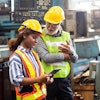
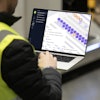


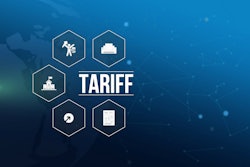





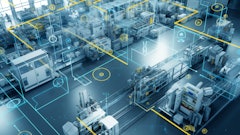



![Pros To Know 2026 [color]](https://img.sdcexec.com/mindful/acbm/workspaces/default/uploads/2025/08/prostoknow-2026-color.mduFvhpgMk.png?ar=16%3A9&auto=format%2Ccompress&bg=fff&fill-color=fff&fit=fill&h=135&q=70&w=240)


